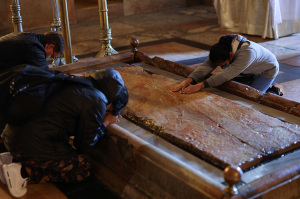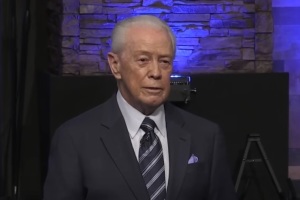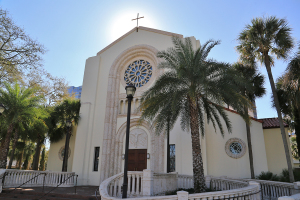Economist Pitches Plan to Reverse Decline of UMC Before It 'Ceases to Exist As We Know It'
An economist volunteering at the South Central Jurisdiction of the United Methodist Church has proposed a plan to help reverse the membership and financial decline of the denomination.
Donald R. House, who holds a Ph.D. in economics and chairs the SCJ UMC's Episcopacy Committee, released the 34-page proposal last Thursday titled "A Strategic Plan for Growth in The United Methodist Church." In an interview with The Christian Post, House explained that the plan derived from exhaustive research on church growth.
"I believe that the strategy will reverse the decline in the UMC in the U.S. My belief comes from considerable examination of almost 750,000 end-of-year reports among 32,000 local churches," said House. "I have considered pastoral leadership, demographic changes in neighborhoods surrounding local churches, and local church spending patterns in seeking to understand local church growth and decline. The strategy is based upon these considerations."
House also told CP that at present the overall plan for the UMC has a couple "pilot projects on-going to test the effectiveness of the strategy. Thus far, the results are positive."
"The strategy is portable – applicable to other mainline denominations. Local churches across the denominations share many things in common," said House.
"The three major drivers of local church growth (pastoral leadership, demographics of neighboring populations, and spending patterns) are common across denominations. Thus, the strategy should work well for other denominations."
Released last week, the "executive summary" of the report outlines the urgency of the situation regarding the decline of the UMC.
"The United Methodist Church in the United States has been in decline since the 1960s. In 2002, the rate of decline markedly increased and has persisted. If this ten-year trend continues, the denomination will cease to exist as we know it in 37 years," reads the summary in part. "Today, there is no single strategy in place seeking to arrest the decline. The Church has already disassembled some of its infrastructure. To reverse the decline, an effective strategy must be implemented."
The strategy involves recruiting approximately 1,000 churches with at least 125 average attendance to raise and spend a combined total of about $120 million annually for growth strategies. Enrollment of those churches would move rapidly without going through an annual conference or General Conference approval process due to the belief that the window of opportunity to reverse the declining trend is relatively brief. The roughly 1,000 congregations would enroll in what is called "The Benchmark Project," which would "foster, through the local churches, strategic ministries to reach more people."
"It is based upon Biblical principles of stewardship and evangelism. It is based upon the applications of entrepreneurial spirit and the financial principle of investment," reads the report regarding the Benchmark Project. "It seeks financial commitments from loyal members, entrepreneurial considerations for growth, strategic financial investments, and sustaining prayer that will enable local churches to experience increases in worship attendance, professions of faith, and ministries to the congregation and community."
According to House, immediate investment in the Benchmark Project and implementation of the plan will likely reverse the trend of decline in the United States by 2021.
Mark Tooley, president of the Institute on Religion and Democracy, told The Christian Post that the plan had a good chance of working. "It has promise because it does not work through the liberal ineffective church bureaucracy but more independently through local churches that might be prone to have an evangelistic interest in growth," said Tooley.
Tooley also said that he felt the success of the plan "depends on the churches and individuals most involved with it." "If they are institutional people focused on institutional preservation, then not much," said Tooley. "If persons genuinely interested in winning the lost to Jesus Christ through the Gospel with a Wesleyan perspective, then that bodes well."
John S. A. Lomperis, the IRD's United Methodist Director, said that he had reservations about the effort. "On the one hand, it is good to hear discussion of the need to turn around our global denomination's 45 years of non-stop U.S. decline and about the need to make disciples," said Lomperis.
"But on the other hand, over the last several years there seems to have been one project after another that gets a lot of buzz for potentially turning our denomination around by focusing on structural, financial, and/or marketing schemes while mostly avoiding the spiritual and theological issues that are at the heart of our problem."
Lomperis also told CP that if "House can surmount the trust barriers, he could probably find quite a number of eager-to-grow congregations to sign up for his plan."
"But even if he wins over a congregation's pastor and a few key leaders, they may in turn may struggle to get the rest of the membership on board, particularly if there is any perceived threat to some of that community's 'sacred cows'," said Lomperis.
According to statistics released last year by the UMC regional conferences, in 2011 the mainline denomination lost 72,000 members, with 18 conferences reporting membership losses of 2 percent or more.




























